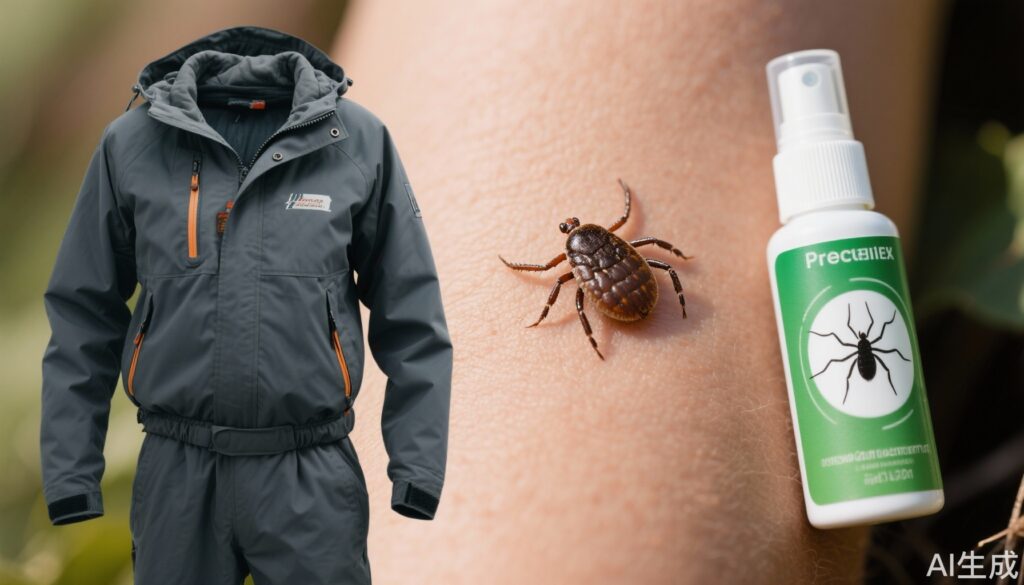Introduction: An Unexpected Threat from Tiny Parasites
In recent health news, an 80-year-old woman was hospitalized in intensive care for 15 days after being bitten by a tick. This case has raised urgent questions: Why can a tiny tick bite cause such severe illness? What dangers do ticks pose, and how can individuals protect themselves? This article delves deeply into the clinical challenges posed by tick bites, exploring the diseases they transmit, symptoms to watch for, treatment options, and prevention strategies.
Understanding the Clinical Context: Tick-Borne Diseases and Their Impact
Ticks are small arachnids that feed on the blood of mammals, including humans. More concerning than their bite itself, ticks are vectors for multiple infectious agents—viruses, bacteria, and protozoa—that can cause serious diseases worldwide. Among these, Lyme disease, tick-borne encephalitis, and Severe Fever with Thrombocytopenia Syndrome (SFTS) stand out for their clinical severity.
The elderly, immunocompromised, and those with underlying health conditions are particularly vulnerable. The recent case of the elderly woman suffering from SFTS underscores the seriousness of tick-borne infections. SFTS is characterized by high fever, dramatically reduced platelet and white blood cell counts, nausea, and vomiting. Without prompt, supportive care, mortality rates can reach up to 20%. Currently, no vaccines or specific antivirals are available; treatment focuses on symptomatic and supportive measures.
What Does the Data Tell Us? Epidemiology and Pathophysiology of Tick-Borne Diseases
Ticks often inhabit grassy fields, forests, and areas dense with animal hosts like rodents and livestock, providing an ideal environment for their lifecycle. When a tick attaches to a human and feeds, its saliva—which contains anesthetics and anticoagulants—helps it to stay attached undetected for hours, swelling up to the size of a soybean.
The silent bite allows for the transfer of pathogens. For example, the bacteria Borrelia burgdorferi cause Lyme disease, while the SFTS virus leads to the severe febrile illness witnessed in the ICU patient. These pathogens disrupt normal immune function, resulting in symptoms ranging from localized skin reactions to systemic illness.
Symptoms to Watch: When to Seek Medical Attention
Recognizing the signs of a problematic tick bite is critical:
– Local reactions: Redness, swelling, itching, or pain at the site of the bite. In some cases, hard nodules, rashes, or crust formation occur.
– Allergic reactions: Sensitive individuals may experience severe allergies, including respiratory distress or anaphylaxis.
– Alpha-gal syndrome: Uncommonly, tick bites can trigger delayed allergy to red meat (beef, pork, lamb), resulting in hives or anaphylaxis hours after consumption.
– Neurological symptoms: Certain tick saliva toxins can induce “tick paralysis,” presenting as progressive limb weakness beginning approximately 4–7 days after the bite. This may escalate to difficulty breathing and, if untreated, death.
If symptoms such as fever, nausea, vomiting, muscle weakness, or unusual allergic reactions develop after a tick bite, immediate medical consultation is vital.
Proper Management After a Tick Bite
Immediate and correct response to a tick bite reduces the risk of disease transmission and complications:
1. Removal: The tick should be removed carefully and promptly. Apply a non-hormonal antibiotic ointment (e.g., erythromycin or aureomycin) on the tick’s body. After about 30 minutes, use fine-tipped, straight tweezers to grasp the tick as close to the skin as possible, pulling steadily upward without twisting or crushing. Check that the entire tick, including the mouthparts and eight legs, is removed. Partial removal requires attention to prevent infection.
2. Cleaning: Wash the bite area and hands thoroughly with soap and water. Disinfect the site with alcohol or iodine solution.
3. Observation: Monitor for up to two weeks for any signs of systemic infection—fever, malaise, gastrointestinal symptoms.
4. Sample Preservation: If feasible, place the tick into a sealed container. This can assist health professionals in identifying the species and testing for pathogens if illness develops.
Preventive Measures Against Tick Bites
Ticks’ saliva contains anesthetic properties that mask their presence; prevention is therefore crucial. Key practices include:
– Avoid sitting or lying directly on grass or shrub-covered areas, especially in tick-infested zones such as forests, pastures, and farms.
– Wear protective clothing: Light-colored, smooth fabric clothes are best. Tuck in shirts and pants tightly at the neck, wrists, and ankles to reduce skin exposure.
– Use insect repellents containing DEET or picaridin on exposed skin to repel ticks and other arthropods.
– Check for ticks thoroughly after outdoor activities, focusing on scalp, behind ears, underarms, and other hidden areas.
– Shower promptly after returning indoors and wash clothes in hot water.
– Maintain yards by clearing tall grass, leaf litter, and debris to reduce tick habitats.
– Protect pets through regular veterinary-approved tick control treatments.
A Fictional Patient Scenario: John’s Story
John, a 68-year-old avid hiker from Pennsylvania, experienced increased fatigue and fever a week after a forest outing. Initially dismissing a small red bump on his leg, he soon developed muscle weakness and nausea. John sought medical care and was diagnosed with early Lyme disease. Swift antibiotic treatment led to a full recovery — a testament to early detection and intervention.
In contrast, his neighbor Mary, bitten by a tick but neglecting symptoms, developed more severe complications requiring hospitalization. Their stories exemplify the spectrum of tick-borne disease outcomes and underscore the importance of vigilance.
Expert Recommendations
Healthcare providers emphasize both individual and community-level strategies to combat tick-borne diseases:
– Increase public education on tick habitats and bite prevention.
– Promote use of personal protective measures when entering at-risk environments.
– Encourage early medical evaluation for suspicious symptoms following tick exposure.
– Support research into vaccines and targeted therapies, particularly for illnesses like SFTS where treatment options are limited.
Conclusion
Ticks carry more than just a bite; they harbor dangerous pathogens that can cause life-threatening diseases such as Severe Fever with Thrombocytopenia Syndrome and Lyme disease. Awareness of symptoms, proper tick removal, and proactive prevention are vital to reducing the burden of tick-borne illnesses. With rising incidences worldwide, both public health initiatives and personal vigilance remain the best defenses against the hidden dangers of ticks.
References
1. Centers for Disease Control and Prevention (CDC). Tickborne Diseases of the United States. Available at: https://www.cdc.gov/ticks/diseases/index.html
2. Yu XJ, Liang MF, Zhang SY, et al. Fever with thrombocytopenia associated with a novel bunyavirus in China. N Engl J Med. 2011;364(16):1523-1532.
3. Wormser GP, Dattwyler RJ, Shapiro ED, et al. The clinical assessment, treatment, and prevention of Lyme disease, human granulocytic anaplasmosis, and babesiosis. Clinical practice guidelines by the Infectious Diseases Society of America. Clin Infect Dis. 2006 Nov 1;43(9):1089-134.
4. Vennestrøm J, et al. Tick paralysis: A systematic review. Ticks and Tick-borne Diseases. 2021;12(2):101602.
5. Commins SP, Platts-Mills TAE. Tick-induced red meat allergy: an emerging problem. Curr Opin Allergy Clin Immunol. 2013 Dec;13(6):354-9.
{
“lang”: “en”,
“multilang”: “vi,ja,zh”
}


